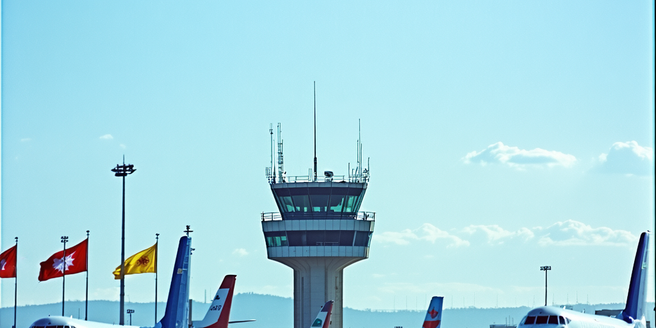
Understanding Directional Winds
Directional winds are a fundamental aspect of meteorology and significantly impact aviation. These winds are named after the direction from which they originate. Pilots and meteorologists closely monitor these winds to ensure safety and efficiency in air travel. Understanding how they operate involves analyzing patterns such as prevailing winds, jet streams, and local breezes that occur due to differences in air pressure and temperature. For instance, the Earth’s rotation and varying surface heating influence wind direction and speed. By understanding these patterns, aviators can better predict weather conditions and plan more efficient routes. The predictability of directional winds allows pilots to utilize tailwinds or avoid headwinds, thus optimizing flight duration and fuel consumption.
How Directional Winds Affect Flight Paths
Directional winds have a critical impact on flight paths. For aviation, understanding these winds enhances both safety and efficiency in airlines’ operations. Tailwinds can significantly decrease flight time, while headwinds can increase it. Pilots rely on meteorological reports to modify routes accordingly, aiming to exploit favorable winds or circumvent undesirable ones. In addition, crosswinds require precise navigation techniques during takeoffs and landings. Accurate wind forecasts enable airlines to schedule flights with optimized fuel usage and minimized delays, leading to cost savings and improved passenger satisfaction. Airlines continuously analyze wind patterns to adjust their fleet’s trajectories, enhancing operational efficiency. By mastering wind navigation, airlines not only enhance safety but also deliver a punctual service to passengers.
The Science Behind Wind Patterns
At the heart of understanding wind patterns is the science of meteorology. The Earth’s rotation, solar heating, and topography all contribute to the formation of wind systems. The Coriolis effect, caused by Earth’s rotation, influences wind direction on a large scale, creating phenomena such as the trade winds and westerlies. Solar heating results in temperature differences, causing air to move from high to low-pressure areas, generating winds. Locally, geography plays a role, with mountains, valleys, and plains shaping the wind’s course. Advances in meteorological science allow for more accurate models and forecasts. By analyzing historical weather data and patterns, scientists can better predict future wind behaviors, aiding in industries reliant on weather prediction, like agriculture, renewable energy, and aviation.
Optimizing Air Routes with Wind Data
Leveraging wind data can optimize air routes by significantly improving flight efficiency and safety. Airlines have invested in sophisticated meteorological systems to predict wind patterns with precision. By integrating real-time wind data into flight planning, airlines can determine the most efficient paths, resulting in reduced fuel consumption and emission. Using favorable winds can cut down flight durations, leading to cost savings and improved schedules. Moreover, navigation systems that adjust for wind variations ensure smoother flights and enhanced passenger comfort. The ongoing refinement of wind prediction technologies continuously assists airlines in making informed decisions. This integration of meteorology with aviation not only ensures operational effectiveness but also contributes to environmental sustainability by minimizing the carbon footprint of flights.
Case Studies: Wind Impact on Flights
Numerous case studies highlight the impact of wind on aviation. For example, during transatlantic flights, airlines often plan routes to take advantage of the jet stream’s strong tailwinds, cutting fuel costs and reducing travel time. Conversely, in 2016, a major airline experienced significant delays when unexpected headwinds drastically affected their flight schedules across the United States. This incident underscored the necessity for precise wind forecasting and adaptive route planning. Another study examined the benefits of using wind-optimized routes for trans-Pacific flights, reporting potential savings in fuel and time. These cases illustrate the importance of wind data in strategic flight planning. Airlines that actively incorporate wind analysis into their operations can better navigate the challenges posed by unpredictable weather, enhancing overall efficiency and reliability.
